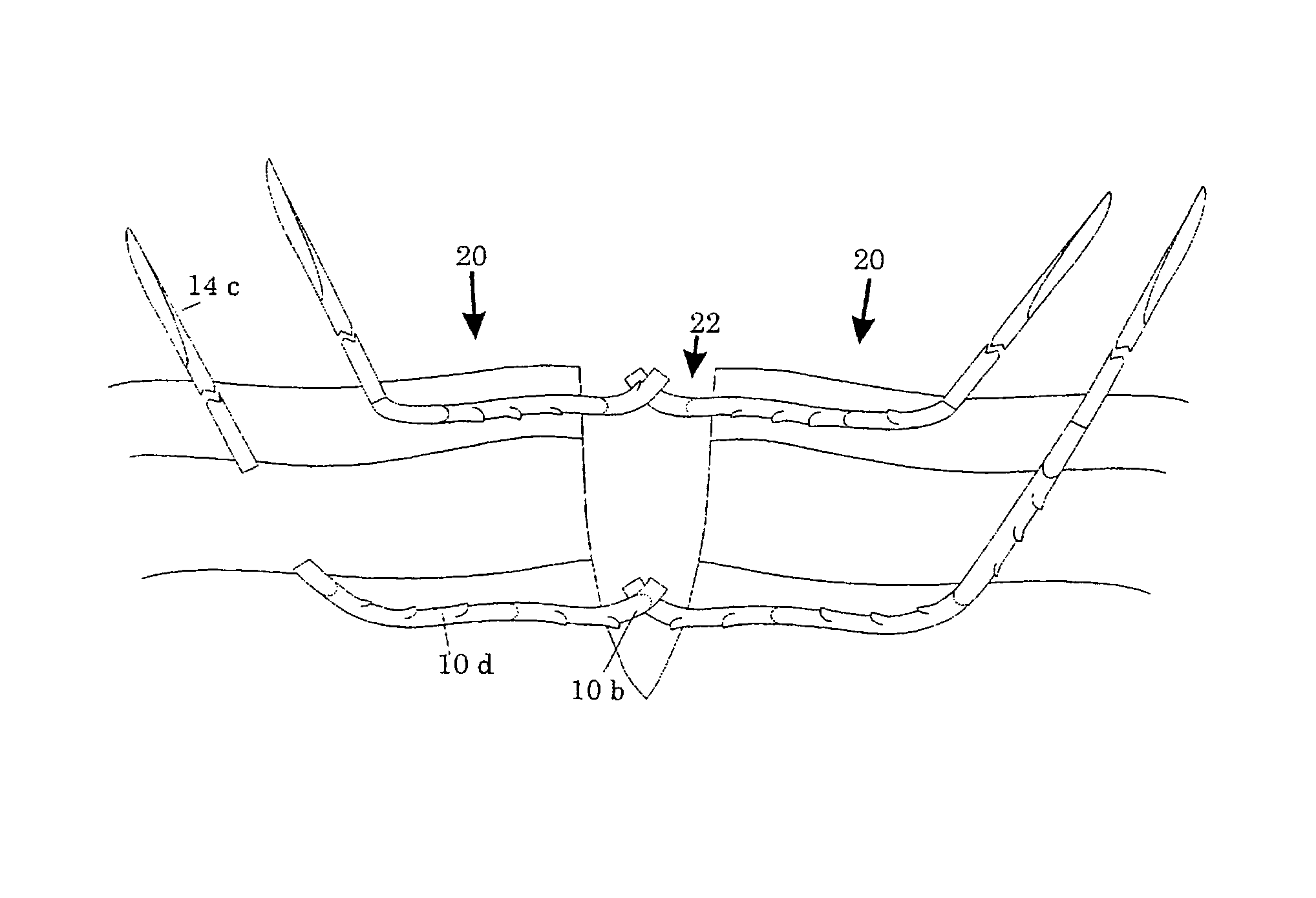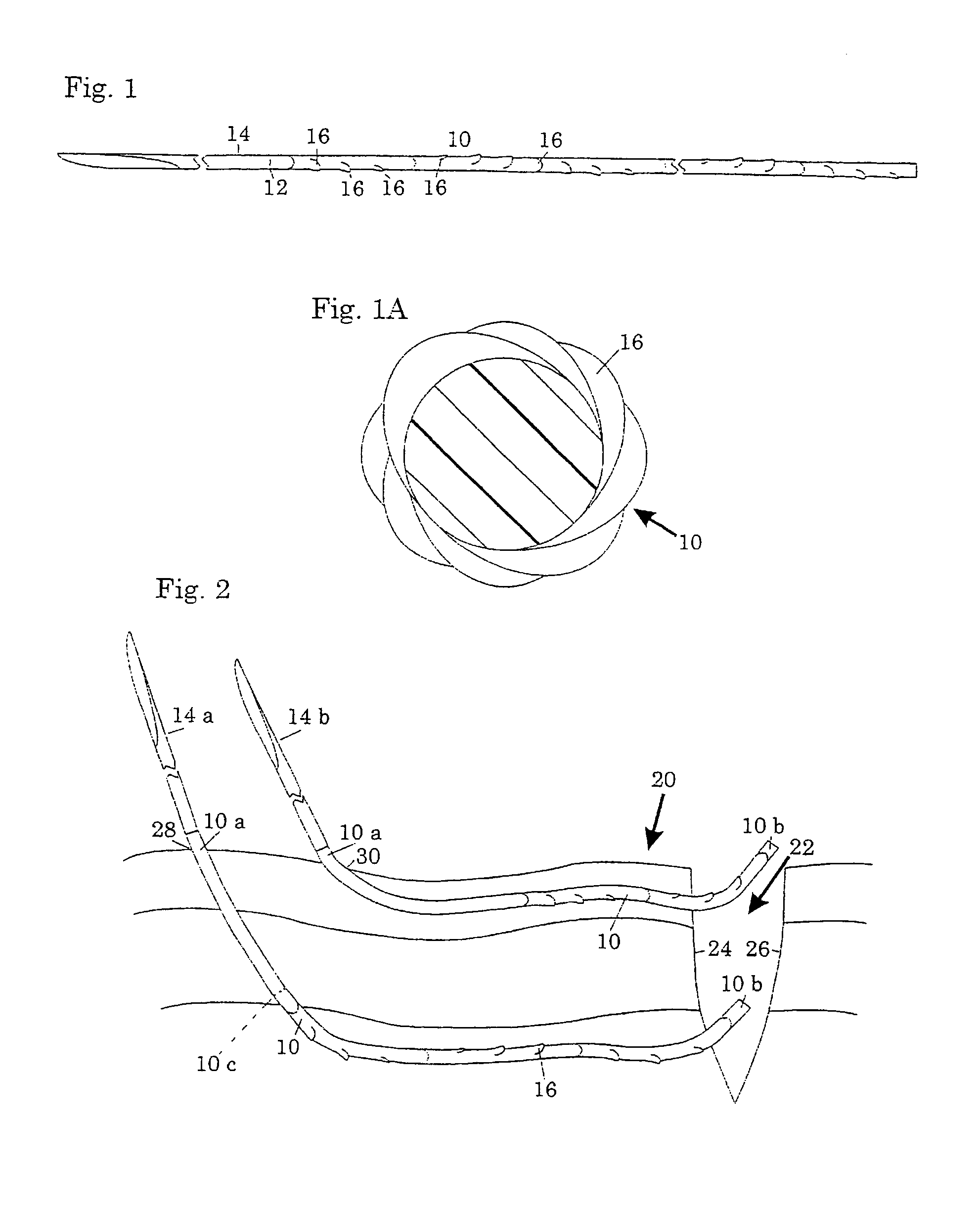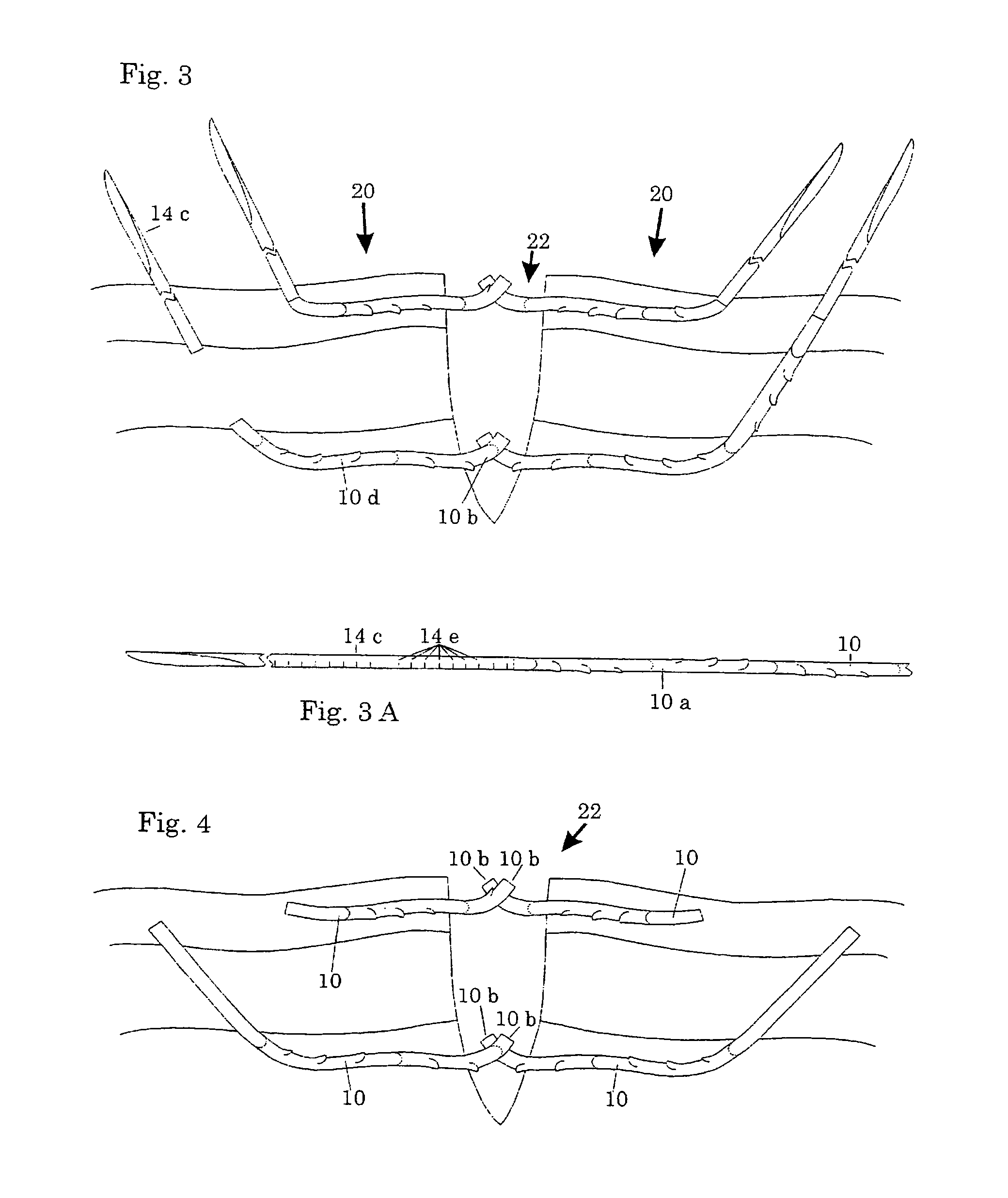Surgical methods using one-way suture
- Summary
- Abstract
- Description
- Claims
- Application Information
AI Technical Summary
Benefits of technology
Problems solved by technology
Method used
Image
Examples
Embodiment Construction
[0035]FIG. 1 shows schematically a suture 10 secured to the trailing end 12 of a surgical needle 14 in accordance with the invention. As described above, the suture 10 is a one-way suture, allowing its travel through tissue in one direction only, toward the left as viewed in FIG. 1, due to the presence of a multiplicity of barbs 16 on the exterior surface of the suture. The barbs 16 are configured to engage against a patient's tissue, much in the manner of a bee's stinger or a porcupine's quill. The surgical needle 14 is long enough to serve the type of tissue repair to be addressed, so that the needle can be completely removed, leaving the suture in the desired position within the tissue.
[0036]FIG. 1A shows in cross section an example of one type of barb configuration which can be used on the sutures of the invention. The suture 10, which may be about 100 to 500 microns in diameter, has the barbs 16 formed in a helical pattern; however, the barbs can also be formed in other pattern...
PUM
 Login to View More
Login to View More Abstract
Description
Claims
Application Information
 Login to View More
Login to View More - R&D
- Intellectual Property
- Life Sciences
- Materials
- Tech Scout
- Unparalleled Data Quality
- Higher Quality Content
- 60% Fewer Hallucinations
Browse by: Latest US Patents, China's latest patents, Technical Efficacy Thesaurus, Application Domain, Technology Topic, Popular Technical Reports.
© 2025 PatSnap. All rights reserved.Legal|Privacy policy|Modern Slavery Act Transparency Statement|Sitemap|About US| Contact US: help@patsnap.com



